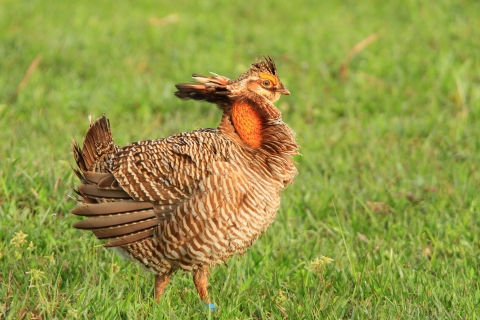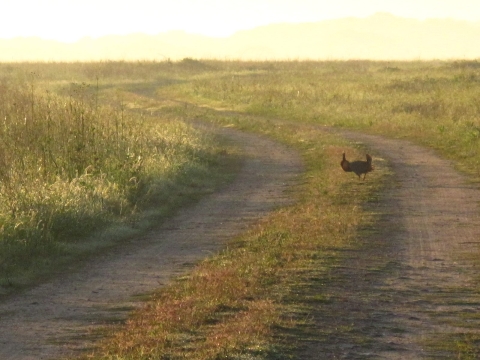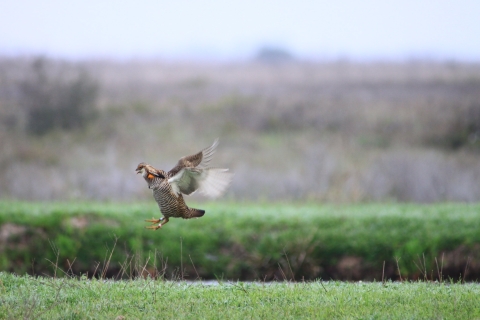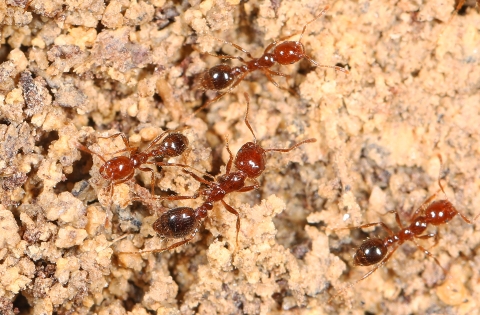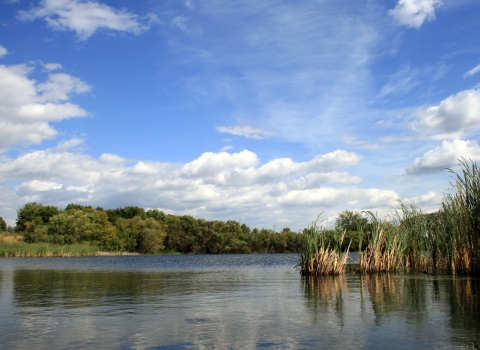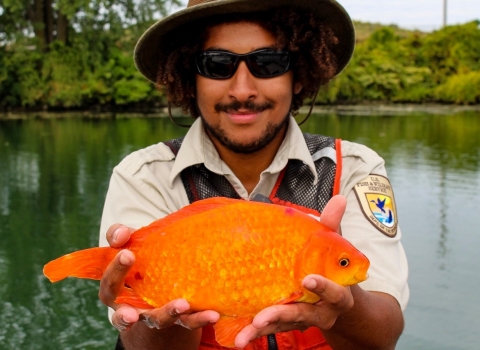After decades of protection and conservation efforts, Texas’ critically endangered Attwater’s prairie-chicken population is at its highest since 1993. Officials with the U.S. Fish and Wildlife Service and The Nature Conservancy in Texas estimate the current population is at least 178 birds, with 89 males counted during the 2021 spring survey at the Service’s Attwater Prairie Chicken National Wildlife Refuge and on private ranch lands participating in grassland management activities as part of the Conservancy’s Refugio-Goliad Prairie Project.
While populations remain at extreme risk, this year’s count demonstrates a remarkable turnaround from near extinction in the wild just a few years ago.
The Attwater’s prairie-chicken, which is actually a member of the grouse family, was once extremely common in coastal grasslands of Texas and southwest Louisiana. Historic writings speak of Attwater’s prairie-chickens being so numerous that they were relied upon to provide fresh meat for cowboys working cattle distant from ranch headquarters.
Because of habitat loss due to woody species invasion and conversion to agriculture, cities and non-native pasture, the Attwater’s prairie-chicken disappeared from Louisiana early in the 20th century, and by mid-century were struggling to hang on in Texas. In 1967, the Attwater’s prairie-chicken became a member of the “class of ‘67” — among the first on the U.S. list of endangered species.
Beginning as early as 1937 with the closure of the hunting season, increasingly intensive efforts were undertaken to stabilize declining populations as the species rapidly approached extinction. Research was initiated to identify factors that were driving these declines, and work was undertaken to restore prairie grasslands infested by brush or otherwise made unsuitable for prairie-chickens.
In the early 1990’s a captive-breeding program was started to preserve as much genetic representation as possible from failing populations and to provide source stock for rebuilding wild populations. Still, for the next 25 years, wild populations remained on the brink of extinction, and wildlife officials were at a loss to explain why in the face of so much effort directed toward recovery of the species.
It was only the safety net provided by captive flocks at Texas zoological institutions like Fossil Rim Wildlife Center, the Houston Zoo, the Caldwell Zoo, the Abilene Zoo and now the Sutton Avian Research Center in Oklahoma, that prevented total loss of the species.
A breakthrough was finally realized when researchers recently documented red imported fire ants were likely derailing prairie-chicken recovery efforts by reducing native insects required as food for newly hatched prairie-chicken chicks. Red imported fire ants, native to South America, first showed up in Attwater’s prairie-chicken habitats around 1970. Wide scale control of fire ants in areas where prairie-chickens were released led to promising signs from Attwater’s prairie-chicken populations.
These gains were repeatedly frustrated by catastrophic weather events such as historic drought in 2011 and several catastrophic rainfall events, culminating in the disaster wrought by Hurricane Harvey. Following the devastating effects of Hurricane Harvey, the 2018 spring count revealed only 13 males remaining in the wild.
But just three years later, the population has managed to rebound well beyond it’s pre-Harvey level. The remarkable recovery from an all-time population low following Harvey, to a population level not seen in almost 30 years, is a testament to the strength of the recovery program, and to the resiliency of the Attwater’s prairie-chicken itself. This rebound demonstrates that these birds still possess the potential for the sort of population growth needed to make recovery possible. It also provides new hope for multiple government agencies, non-governmental groups, and individuals that are actively engaged in helping this once iconic inhabitant of coastal Texas grasslands regain a foothold on the way to recovery.

